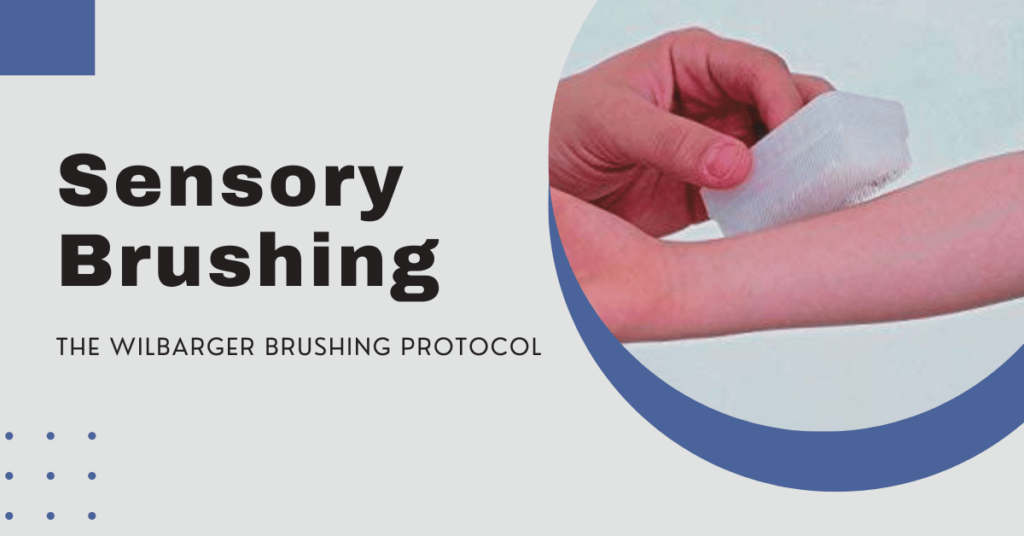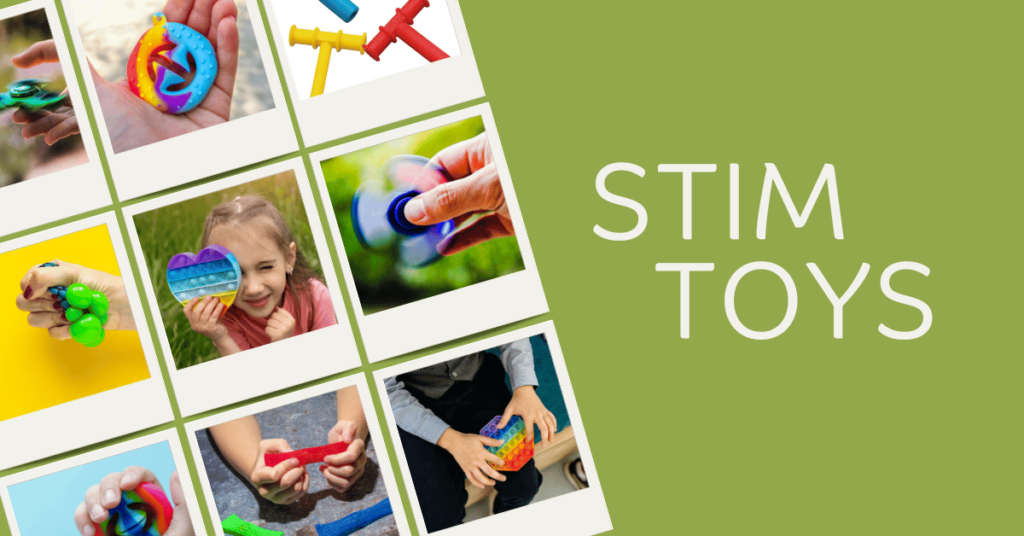Disclosure: This post may contain affiliate links. As an Amazon Associate, I earn from qualifying purchases. This means that if you click on a link and make a purchase, we may earn a commission at no additional cost to you. We only promote products we truly believe in, and your support helps us continue providing valuable content to our readers.
- I. Introduction
- II. What is the Wilbarger Brushing Protocol?
- III. How Does the Wilbarger Brushing Protocol Work?
- IV. The Benefits of Sensory Brushing
- V. The Steps of the Wilbarger Brushing Protocol
- VI. Applicability and Suitability of Sensory Brushing
- VII. Considerations and Precautions
- VIII. Effectiveness and Research
- IX. Conclusion: Promoting Sensory Modulation and Well-being: The Power of Sensory Brushing Technique
I. Introduction
Sensory processing plays a crucial role in how our brains deal with sensory information, and perceive and respond to sensory information from the environment. For individuals with sensory processing difficulties, sensory input can be overwhelming or underwhelming. It affects their ability to engage in daily activities.
Finding effective interventions is essential to improving their daily lives. One such intervention is the Wilbarger Brushing Protocol. It is a sensory integration technique using a sensory brush. It is designed to help regulate sensory responses and promote adaptive behaviors.
II. What is the Wilbarger Brushing Protocol?
It was developed by Patricia Wilbarger, an occupational therapist. The Wilbarger Brushing Protocol is a widely recognized therapeutic technique. They are used in sensory integration therapy. This technique is primarily aimed at addressing sensory defensiveness and hypersensitivity. These are standard traits among individuals with sensory processing challenges.
III. How Does the Wilbarger Brushing Protocol Work?
The Wilbarger Brushing Protocol involves the use of a sensory brush. It uses a soft, surgical-style brush with densely packed bristles. The technique uses this brush to provide deep pressure and tactile stimulation to the individual’s skin. They follow specific patterns and sequences. The brushing is done over various parts of the body, including the arms, legs, back, and hands. The aim is to desensitize the individual to tactile stimuli. And help their nervous system better process sensory input.
IV. The Benefits of Sensory Brushing
Sensory brushing is a valuable therapeutic tool. It offers a plethora of benefits for individuals with sensory processing disorders. And also for individuals with other related conditions.
1. Sensory Regulation
Sensory brushing is a powerful technique that aids in sensory regulation. It provides deep pressure and tactile input to the sensory receptors. It helps individuals better manage their responses to various stimuli in their environment. This regulation is crucial for individuals with sensory processing disorders as it allows them to modulate sensory input effectively. And prevent sensory overload or seeking behaviors.
2. Improved Attention and Focus
One of the significant benefits of sensory brushing is its positive impact on attention and focus. Through enhanced sensory integration, individuals are better equipped to filter out distractions. It helps maintain focus on tasks. This improved attention span allows them to engage in activities more effectively. It helps them participate in daily tasks with greater efficiency.
3. Enhanced Body Awareness and Proprioception.
Sensory brushing plays a pivotal role in promoting body awareness and proprioception. The deep pressure and tactile stimulation help activate the proprioceptive system. It provides valuable feedback to the brain about body position and movement. As a result, individuals experience an improved sense of where their body is in space. It leads to better motor planning and coordination.
4. Emotional Regulation and Calming Effect.
It is suitable for individuals facing emotional regulation and behavior challenges. Sensory brushing can be a soothing intervention. The deep pressure and gentle tactile input elicit a calming effect. It helps individuals manage anxiety and stress. The sense of security and comfort provided by sensory brushing can aid in emotional self-regulation. It helps reduce emotional dysregulation and helps support better behavioral responses.
V. The Steps of the Wilbarger Brushing Protocol
1. Assessment
Before starting the Wilbarger Brushing Protocol, a crucial initial step is the assessment. An occupational therapist with the necessary training conducts this examination. This assessment comprehensively evaluates the individual’s sensory needs—the individual’s preferences and challenges. The therapist interacts with the individual and gathers information about their sensory sensitivities. Learn about their aversions and responses to different stimuli.
During this phase, the therapist might use various tools. They make use of questionnaires, observation, and interviews. They aim to gain insights into the individual’s sensory profile. The goal is to identify the specific areas where sensory processing difficulties are most pronounced. The therapist then determines whether the protocol is appropriate for the individual. Or if alternative interventions might be more suitable.
2. Brushing
Next is applying deep-pressure strokes using a sensory brush, which is the hallmark of the Wilbarger Brushing Protocol. This step involves using a specialized brush with soft yet densely packed bristles. The therapist administers firm but gentle strokes over specific areas of the body. In most cases, the areas targeted include the arms, legs, back, and hands.
The brush’s bristles provide tactile stimulation. It aims to desensitize the individual to touch and sensory stimuli. The therapist follows a predetermined pattern while brushing, ensuring consistency and effectiveness. The goal is to activate sensory receptors in the skin. It encourages the nervous system to process tactile information in a more adaptive manner.
3. Joint Compression
Joint compression techniques are often integrated into the protocol to enhance sensory modulation. These techniques involve applying deep pressure to the joints, such as the elbows and knees. Joint compression can be achieved through gentle squeezing or squeezing-release patterns. Just like the brushing phase, joint compression aims to provide sensory input. Sensory input supports the individual in better regulating their sensory responses.
By targeting the joints, the therapist addresses two aspects of sensory processing. It addresses both tactile and proprioceptive. Proprioception refers to the body’s awareness of its position and movement in space. This dual approach to addressing tactile and proprioceptive sensitivities is very effective. It contributes to a more holistic sensory integration experience.
4. Vigorous Movement Activities
Next, the individual engages in vigorous movement activities. These activities are purposeful and dynamic. It encourages the integration of the sensory input received during the earlier phases. Engaging in movement helps the nervous system process sensory information. And incorporate it into the individual’s overall sensory experience.
Vigorous movement activities can range from jumping jacks to swinging on a swing. It depends on the individual’s preferences and sensory needs.
5. Carryover Activities
The final step of the protocol involves carryover activities. Once the individual has experienced the sensory modulation effects of the previous actions, they are encouraged to apply these newfound skills in their daily life. Carryover activities are the bridge between the therapeutic setting and the real world.
These activities can be as simple as using a textured mat while sitting. Engaging in play that involves tactile exploration. Or participating in activities that were once challenging due to sensory sensitivities. The goal is to reinforce the positive changes achieved through the protocol. They are helping the individual generalize their sensory processing improvements to various environments and situations.
VI. Applicability and Suitability of Sensory Brushing
Sensory brushing is a versatile therapeutic approach. It can benefit a wide range of individuals. It is commonly used in occupational therapy settings. However, its application can extend to home and educational environments as well. The technique is suitable not only for children and adolescents. It is also ideal for adults who experience sensory integration challenges.
The sensory brushing routine is individualized. It is based on the person’s specific needs and preferences. It is also paramount to achieve the desired therapeutic outcomes.
VII. Considerations and Precautions
Safety considerations and precautions are essential when using the Wilbarger Brushing Technique. It is crucial to follow the recommended guidelines. It is best to work closely with a qualified occupational therapist. Work with a specialist who understands the proper techniques and safety precautions. It is to avoid any potential adverse effects.
The Wilbarger Brushing Protocol is not recommended for individuals with certain medical conditions. It is not recommended for individuals with skin sensitivities. A professional assessment is necessary before implementing the protocol.
Some individuals might experience discomfort or heightened sensory responses during the initial sessions. Gradual progression and close monitoring are crucial. It is to ensure the individual’s comfort and safety.
VIII. Effectiveness and Research
Sensory brushing is studied as a therapeutic intervention in occupational therapy. Research and studies explore its effectiveness in this field. Some studies suggest positive outcomes, particularly in reducing sensory defensiveness and improving sensory modulation.
However, further research is needed to understand the long-term effects of sensory brushing fully. And establish its effectiveness across a broader range of individuals and conditions. Continued research and evidence-based practices will contribute to the ongoing development of this. And help with the refinement of sensory integration techniques.
IX. Conclusion: Promoting Sensory Modulation and Well-being: The Power of Sensory Brushing Technique
Sensory brushing, known as the Wilbarger Brushing Technique, offers a promising approach. It provides a practical approach to address sensory integration challenges. They are aiming to help individuals better manage their sensory sensitivities.
Sensory brushing provides deep pressure and tactile stimulation. It helps individuals regulate sensory input. It helps them improve their attention and focus. Enhance body awareness and address emotional regulation and behavior challenges.
Sensory brushing can be a valuable tool when implemented correctly and with proper guidance. It is an excellent tool for promoting sensory modulation and enhancing overall well-being.
Can parents and caregivers perform sensory brushing at home?
Yes, with proper training and guidance from an occupational therapist. Parents and caregivers can perform sensory brushing at home. It is crucial to receive adequate instruction on the correct brushing technique: the appropriate pressure to apply and the specific areas of the body to target.
How often should you perform sensory brushing?
The frequency of sensory brushing sessions can vary depending on the individual’s needs. And so with the therapeutic goals. It should be determined through collaboration between the occupational therapist, parents, and caregivers. It should consider the individual’s sensory processing challenges and responses to the intervention.
Is sensory brushing suitable for all individuals with sensory processing challenges?
Sensory brushing can be beneficial for many individuals with sensory integration challenges. It is, however, essential to work with a qualified occupational therapist. It is to determine its suitability on a case-by-case basis. Factors such as the individual’s specific sensory difficulties should be considered, along with the medical history and any contraindications.
Is sensory brushing suitable for children and adults alike?
Is sensory brushing suitable for children and adults alike?
Yes, sensory brushing is suitable for individuals of all ages. It is commonly used with children. However, adults with sensory integration challenges can also benefit from this therapeutic technique. Its effectiveness is not limited by age. It depends on the individual’s specific sensory needs and response to the intervention.
Can sensory brushing replace other sensory integration therapies?
While sensory brushing is a valuable therapeutic tool, it is not meant to replace other sensory integration therapies. Instead, it should be integrated into a comprehensive sensory integration therapy plan.
Each individual’s sensory processing challenges are unique. A combination of therapeutic approaches may be necessary to address their specific needs effectively.
Can you make alterations to sensory brushing for individuals with different sensory preferences?
Yes, you can adjust to accommodate individuals’ different sensory preferences. Some individuals may be more sensitive to touch and require a gentler brushing technique. In contrast, others may benefit from firmer pressure.
Additionally, you can use different types of brushes to cater to individual preferences—brushes with varying bristle textures and densities.
Can you use sensory brushing as a stand-alone intervention?
It is best used as part of a comprehensive sensory integration therapy program. A holistic approach integrating sensory brushing with other therapies is best as it allows for a more well-rounded and individualized intervention plan tailored to each individual’s unique needs.



